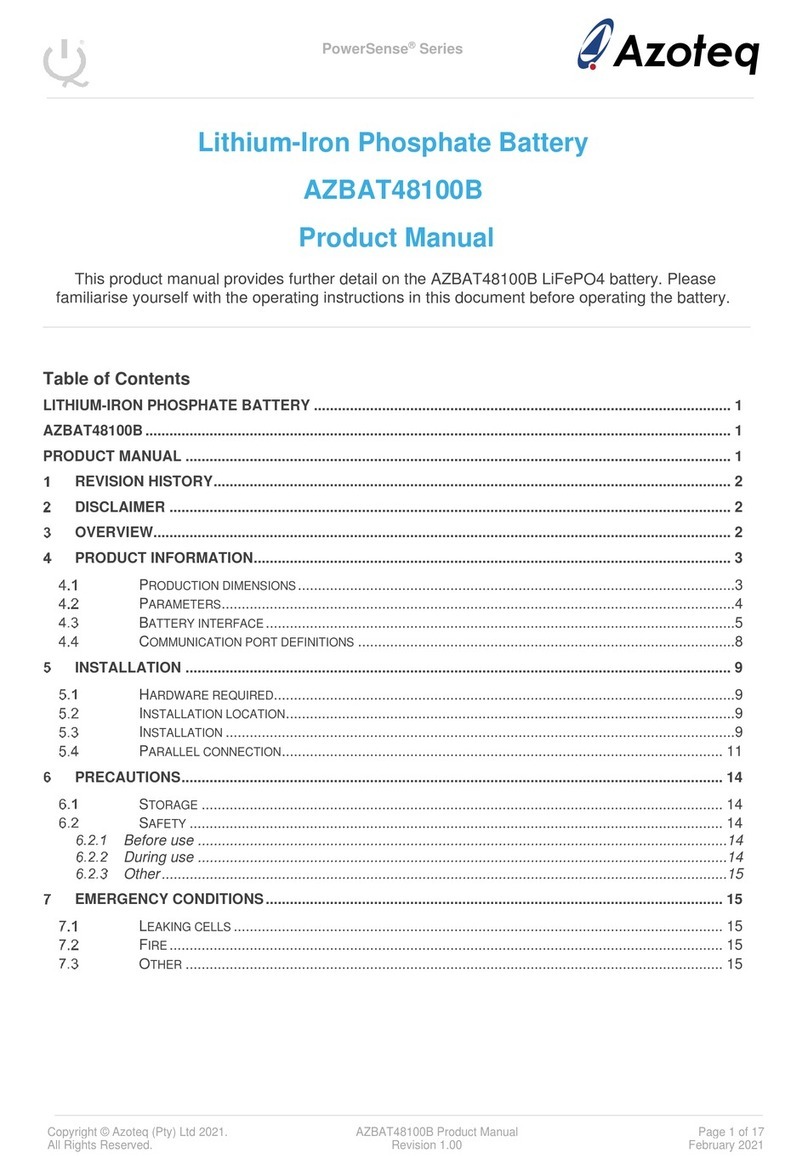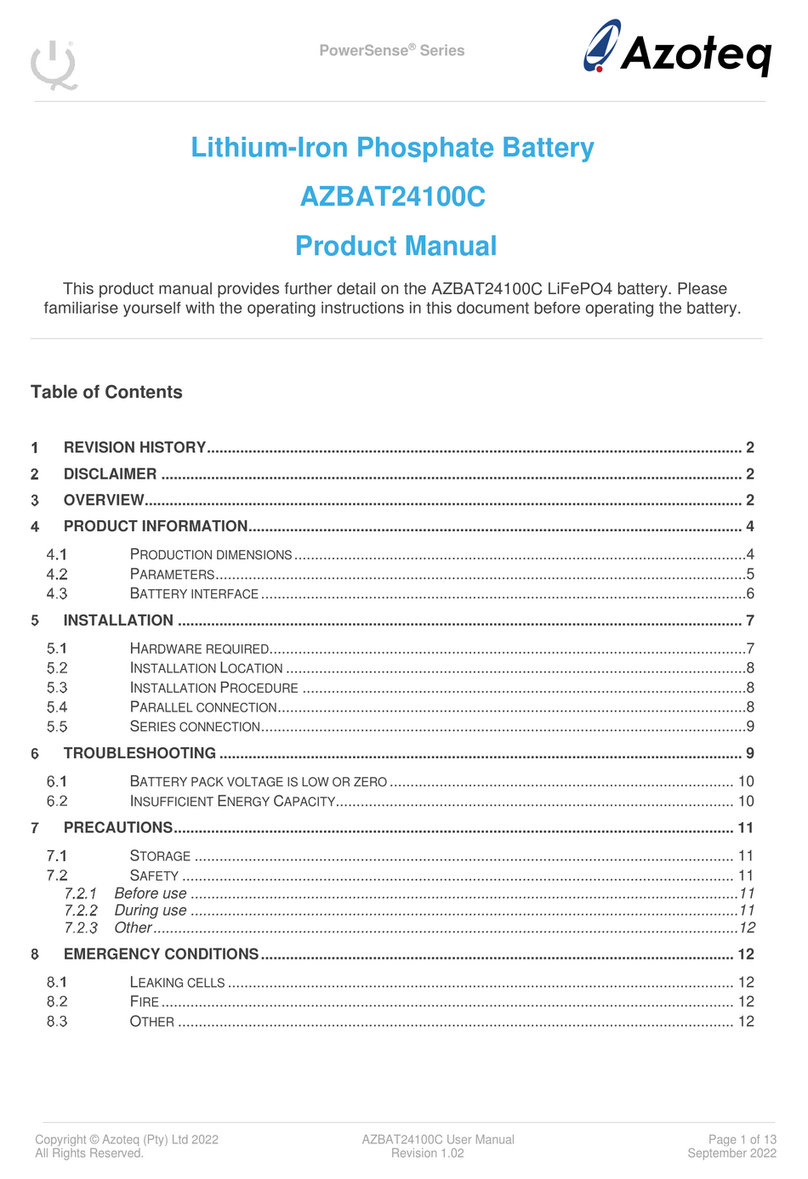Lithium-Iron Phosphate Battery
AZBAT48100C
Product Manual
This product manual provides further detail on the AZBAT48100C LiFePO4 battery. Please
familiarise yourself with the operating instructions in this document before operating the battery.
Table of Contents
REVISION HISTORY................................................................................................................................. 2
DISCLAIMER ............................................................................................................................................ 2
OVERVIEW................................................................................................................................................ 2
SAFETY PRECAUTIONS ......................................................................................................................... 3
PRODUCT INFORMATION....................................................................................................................... 4
PRODUCTION DIMENSIONS.............................................................................................................4
DETAILED PARAMETERS................................................................................................................5
BATTERY INTERFACE.....................................................................................................................7
COMMUNICATION PORT DEFINITIONS ........................................................................................... 10
BATTERY MANAGEMENT SYSTEM FUNCTIONALITY........................................................................ 11
INSTALLATION ...................................................................................................................................... 11
HARDWARE REQUIRED................................................................................................................ 11
INSTALLATION LOCATION............................................................................................................. 12
INSTALLATION PROCEDURE ........................................................................................................ 12
PARALLEL CONNECTION.............................................................................................................. 14
TROUBLESHOOTING ............................................................................................................................ 16
BATTERY START-UP PROCEDURE ................................................................................................ 16
BATTERY PACK VOLTAGE IS LOW OR ZERO................................................................................... 17
INSUFFICIENT ENERGY CAPACITY................................................................................................ 17
PRECAUTIONS....................................................................................................................................... 18
STORAGE .................................................................................................................................. 18
SAFETY ..................................................................................................................................... 18
Before use ....................................................................................................................................18
During use ....................................................................................................................................18
EMERGENCY CONDITIONS.................................................................................................................. 19
LEAKING CELLS.......................................................................................................................... 19
FIRE.......................................................................................................................................... 19
OTHER ...................................................................................................................................... 19






























